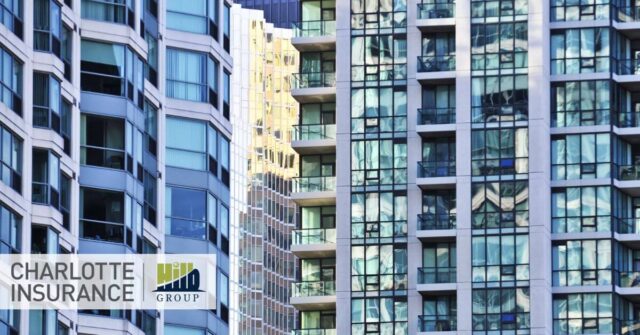Owning a multi-unit or multi-family building is usually a promising investment, as long as the structure is sound, well maintained, and contains the safety features that your location requires. However, there is one danger that you can’t predict: fire. When a larger building catches on fire, not only is it tougher for the fire department to put out, due to its size, but you also need to worry about your tenants and any potential damages.
So, with this looming risk, how can you put your mind at ease? Having the right fire insurance policies in place will help bring peace of mind.
Multifamily Property Insurance
While some smaller multi-family buildings, like those that have two or three connected units, might qualify for a standard homeowner’s insurance policy, a larger building, like one with hundreds of units, needs a different type of policy. Usually, these insurance policies are referred to as multifamily property insurance, although other names might be used. What matters is the fact that these insurance policies are designed to cover the building in case of a fire.
What Does Multifamily Property Insurance Cover?
The people living in the building will need to have renters’ insurance, which covers the replacement costs of their belongings, like furniture, clothing, electronics, and more. This is because multifamily property policies only cover the building itself. Any common spaces, such as hallways, lobbies, and elevators, are included in this as well.
If a fire breaks out, the multifamily property insurance will cover the repairs or replacement costs of things like walls, flooring, ceilings, the outer walls of the building, windows, and more. However, in some cases, these policies also include liability coverage, which will pay for any injuries caused by the fire, a loss of rental income, and in some cases, even provides reimbursement for the temporary costs of relocated tenants, at least until their rental insurance takes over.
How Much Will This Insurance Cost?
Multifamily property insurance policies can vary in cost, as there are plenty of factors to consider. Things like the overall age of the building, as well as how well maintained it is, play a role in determining policy costs. Other things, like sprinkler systems, proper fire alarms, and even fire walls built into the structure are also taken into account.
In addition, the insurance company considers factors like:
- Building Size – Both how many units and how many square feet in size are important. Obviously, larger buildings will cost more to repair or replace, so they’ll have higher premiums.
- Location – Is the building located near a fire hazard, such as a power plant? If so, then this may also play a role in policy cost.
- Building Materials – What is the building made out of? Wooden structures, which burn more easily, will cost more to insure than those made out of brick or stone.
Have Questions? Contact Charlotte Insurance
Want to learn more about fire insurance for multi-unit buildings? Contact Charlotte Insurance. Our agents can explore and explain all available options and put together the insurance coverage plan your business needs.

